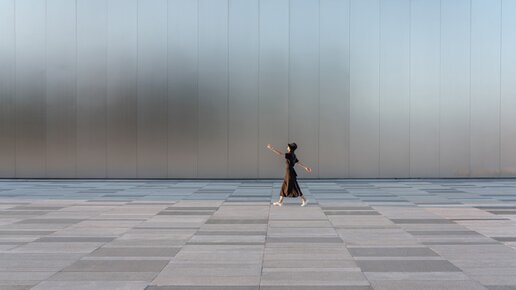No more breakfast egg, no butter and no more cream cakes from now on.” From a certain age onwards, elevated cholesterol levels form a popular table discussion. But what many people don’t know: The fat-like substance itself is not bad in itself, it is even vital for our body. So when does cholesterol become a problem? And what about the two cholesterol levels – the “good” and “bad” cholesterol? We would like to clarify this.
What exactly is cholesterol?
The word cholesterol is derived from the Greek and means “bile” (Greek chole) and “solid” (Greek stereos). Cholesterol – hardly any other food component has such a bad image as this fat-like substance. But cholesterol per se is not bad at all – it is even vital for our organism. As an essential building block of our cell membranes, cholesterol is indispensable for our body, gives the cells stability and serves as a “sluice” for the absorption and release of substances. In addition, cholesterol serves as a preliminary stage for certain hormones, it is involved in the production of bile acids and is required for the body's own formation of vitamin D.
What is the difference between HDL, VLDL and LDL cholesterol?
If the cholesterol level is increased from a certain age, those affected are often willing to remove high cholesterol from their diet plan. However, more recent scientific findings show that food cholesterol affects our cholesterol levels only to a limited extent. The main part of our cholesterol is not absorbed through food, but is formed by the body itself. It is transported in the blood there by so-called lipoproteins, in particular low-density lipoproteins (LDL) and high-density lipoproteins (HDL).
The natural task of LDL is to deliver cholesterol from the liver into the body periphery. Elevated values are considered harmful to health, as they are associated with a higher risk of vascular blockages (arteriosclerosis). For this reason, LDL is often referred to as “bad” cholesterol.
HDL, on the other hand, is considered the “good cop” in this due to its vasoprotective effect. The lipoprotein brings cholesterol from the body cells into the liver, where it can then be broken down. In addition, HDL has the ability to dissolve cholesterol that has already stuck to the vessel walls and to transport it away towards the liver.
While HDL and LDL are on everyone’s lips, very-low-density lipoprotein (VLDL) is rarely heard. VLDL is primarily used for the transport of triglycerides (a large part of the dietary fats) and can be gradually converted into LDL on its journey through the body via the cleavage of these fats. VLDL is only rarely determined, but high values still burden our vascular health.
When is cholesterol dangerous?
Cholesterol is essential for us – but an excess can burden the heart and blood vessels. Up until now, cholesterol has been divided into a kind of black and white world. While LDL cholesterol was demonised as bad cholesterol, HDL was praised by all as the good cholesterol. However, new studies have shaken this picture of values and show that too much of the good thing is probably not so good. Investigations into this are still ongoing. Nevertheless, as with so many things in life, it seems to depend on a good balance and a healthy average.
What cholesterol levels are normal?
As a rule, cholesterol levels rise with increasing age. In order to keep an eye on your cholesterol metabolism, cholesterol levels should be routinely checked during your annual screening examination.
In addition to total cholesterol, the values of LDL and HDL cholesterol as well as those of triglycerides are decisive. Depending on the personal initial condition (risk category), there are different target ranges for the LDL as well as the total cholesterol level. This should be the target as part of the cardiovascular prophylaxis. The personal risk category depends, among other things, on age, gender, tobacco consumption and various pre-existing conditions. Further information on the risk groups can be found in the Austrian Lipid Consensus (2016).
Risk category | LDL cholesterol target level | Target value for the total cholesterol level without HDL cholesterol* |
| very high | < 70 mg/dl | < 100 md/dl |
| high | < 100 mg/dl | < 130 mg/dl |
| moderate | < 130 mg/dl | < 160 mg/dl |
| low | < 160 mg/dl | < 190 mg/dl |
Source: Austrian Lipid Consensus (2016)
* This value must be used if the triglyceride values are above 200 mg/dl
Other laboratory parameters relevant for the overall lipid profile are:
- HDL cholesterol
- Women >45 mg/dl (1.2 mmol/l)
- Men >40 mg/dl (1 mmol/l)
- Triglycerides 150 mg/dl (1.70 mmol/l)
- Lipoprotein(a) 30 mg/dl (45 nmol/l)
Diet to prevent increased cholesterol
Cholesterol in food
If cholesterol levels are increased from a certain age, those affected often remove high-cholesterol foods from their diet. However, thanks to recent scientific knowledge, it is now known that food cholesterol affects our cholesterol levels only to a limited extent. The main part of our cholesterol is not absorbed through food, but is formed by the body itself.
How does diet affect cholesterol levels?
The fat quality of the food has a notable effect on the cholesterol level: Thus the intake of saturated animal fats should be reduced and foods with unsaturated fatty acids – omega 3 rich vegetable oils, algae, fish, omega 9 rich olive oil – should be increased.
Alcohol, fast food, pastries, fried foods that are rich in unhealthy trans-fatty acids and foods made of white flour with a high sugar content have an impact on our cholesterol levels and should be strictly limited or ideally avoided altogether. A diet with a focus on fruit and vegetables, which provides plenty of fibre, should be the mainstay of your daily nutrition.
How can I reduce my cholesterol naturally?

Which foods lower cholesterol?
A balanced, plant-based diet is particularly good for your cholesterol levels. Fresh fruit, vegetables and salad as well as good fats from fish, nuts and seeds should be included in the menu as staples. Whole grain products and high-quality protein suppliers, such as legumes and lean meat, complete the cholesterol-friendly diet. If there is a family history of high cholesterol, dietary changes alone usually do not lower the cholesterol levels sufficiently. Nevertheless, you should still choose a cholesterol-friendly diet and lifestyle.
More tips to reduce cholesterol through diet
Sugar should only be consumed rarely and in moderation, and for cheese the rule of thumb is: The lower the fat content the better. Low-fat cheeses include hard cheese or grainy cream cheese (cottage cheese). As far as fish is concerned, fat is not an issue. Sardines, mackerel, herring, salmon or tuna can be added to the menu once or twice a week and provide plenty of omega-3 fatty acids.
Weight on track: Lower cholesterol through sport and exercise
In addition, regular exercise is also an important step to reducing raised cholesterol levels in a natural way – especially if extra pounds are lost in the process. Dealing with obesity is one of the most effective ways to lower cholesterol.
If you exercise every day and practice endurance sport several times a week, you can slow down the ageing of your blood vessels, positively influence your blood pressure and heart rate, and reduce your cholesterol level without medication.
Quit smoking:
Smoking not only damages the blood vessel walls and narrows the veins, it is also associated with lower HDL values (“good” cholesterol) and higher LDL values (“bad” cholesterol).
Balance cholesterol levels with nutrients and natural products
People who want to positively influence their cholesterol levels can additionally benefit from certain natural products and nutrients. For example, monacolin K (contained in red yeast rice), alpha-linolenic acid and phytosterols help to keep cholesterol levels in check.
The daily intake of 2 g alpha-linolenic acid (e.g. in linseed oil and gold of pleasure oil) and at least 0.8 g phytosterols (e.g. in oil-bearing seeds, soy, cereals, nuts) supports the maintenance of a normal blood cholesterol level.
PRODUCT TIP
Do you know Biogena MiraCHOL® 3.0 Gold and FiboCHOL®? Both top supplements stand up for a healthy cholesterol level.










